You will receive the greatest value by remembering "The Three Ls," which are very simple, and critical to your success: Listening, Learning, and Leading.
Some customer service representatives are so good at what they do that disgruntled clients actually leave feeling very positive about the experience. One has to wonder exactly how they manage to do this.
Before she passed away, my marketing representative, Kathy Gunter, was easily the most talented client relations representative I had ever met. When studying the traits that made Kathy so great at her job, I couldn't help but notice that she developed her client relationships like no one else I've met. She got to know them well by finding ways to win them over and find—or create—common ground.
Kathy had the unique ability to identify introverts versus extroverts, and sort out the detailer versus the generalist. She could identify client trademarks and had the unique ability to know how and where to steer the relationship. This chapter will identify some of these customer personalities and discuss ways to deal with them.
Clients form and exhibit traits from multiple types of patterns. One of the most popular programs I have delivered over the years is a presentation titled "X-Raying the Prospects." In this seminar, we examine the characteristics of some 28 different personality patterns and provide various methods on how to deal with them.
Napoleon the Strutter is our first personality. We affectionately refer to this customer as the "Bantam Rooster," because they generally rub you raw. They get a kick out of ruffling your feathers.
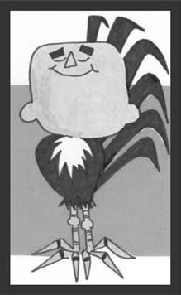
The great temptation is to put Napoleons in their place, because they may be wrong more than they are right. Because the "strutter" is self-centered, they will tend to brag a lot. So play to their personality. Compliment Napoleon often. Stroke his ego. Prop him up. It'll be much easier solving their problem if they see you as an ally.
"No-No Ned" can be a problem customer. The "Neds" of the world never agree to anything. They suffer from "oppositional reflex," that is, they take the opposite position on every issue. You say yes; they say no. You say black; they say white. You say day; they say night.
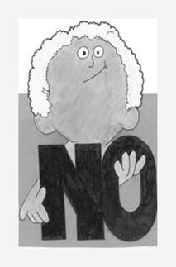
This customer flirts with solutions, but never seems to get there without a battle. So remain kind but forceful with them. It's okay to close hard on solutions because they get a kick out of taking the opposite position on everything you propose. You may have to spend lots of time dealing with "No-No Ned" if you expect to satisfy them. In some cases, you are better off "firing the client" if they insist on demanding that you deliver the impossible.
"Hard-Nosed Harry" is one difficult guy. This customer is genuinely baffling because of an unyielding personality. The best piece of advice I can offer is to ignore his act, because that's all it is: an act. He uses it because it works so well on people.
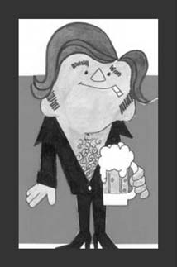
Harry uses his tough-guy image to scare people off, so try killing this customer with kindness. Adopt the philosophy: "Be wrong so that Harry may be right." Earn their trust, and the Harrys of the world will buy much from you.
"Manny-the-Milquetoast" is like a little Timid Tommy—afraid of everyone and everything. The great temptation is to bully Tommy into doing anything you want. Because of their timidity, it's easy to try to push them around—but don't do it. Instead, keep your promises to this apprehensive prospect. They might be "Milquetoast," but they have feelings and deserve to be treated fairly and decently. Compliment the shy prospect, but be sincere with them. They wear their feelings right on their sleeve. Work closely with them for solutions that are fair and equitable and they will refer others to you because you were so patient.
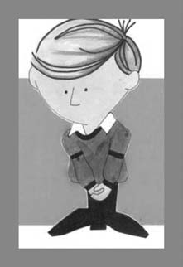
The Jester is a joker who is full of themselves. They have an abundance of wit and wisdom that they will freely share with you whether you want to hear it or not. They love to joke around, many times at your expense. The tricks and pranks they will play with you are all about subterfuge.
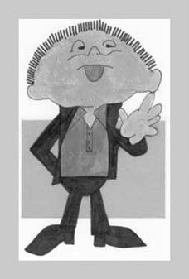
The Jester likes to cheat and plot. They are not terribly honest, though they appear very candid. Do not contradict them; that means that you are playing their game. You can flatter the Jester into almost any decision to buy into any proposal you suggest.
One effective method is to use closed-ended questions that start with the words "did, would, could, should, may, and can." Typically, since these questions lead to yes-no responses, they'll allow you to channel and direct them toward a decision.
The "naïve" client is typically young and inexperienced and doesn't have a lot of skill in dealing with important decisions. Counsel with them; let them benefit from your know-how and your ability to solve their problems.
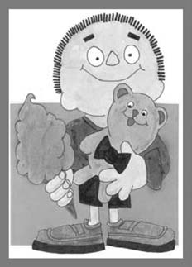
Never take advantage of the untried client. Their immaturity is not a trait for you to exploit, but rather to understand. They respect your opinion and will do a lot of business with you if you'll simply treat them fairly and honestly. Like all babes in the woods, they occasionally need a pacifier. Pacify them and they will not only do business with you, but they'll refer their friends. Violate their trust, and you will lose them forever!
Middle-Aged Maxes are the largest of the customer base today and the most active of all the age-groups. Their age range is typically 30 to 55 and they are the target of most of the advertising done today because they buy the bulk of new homes, cars, and other major purchases. Statistically, they constitute close to half the buying public. They change jobs more often than other groups. They are much more transitional in that they have kids and their circumstances are in a constant state of flux.
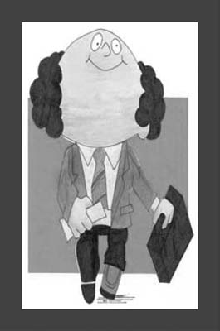
Max is not necessarily the most accomplished or affluent of all clients, but he is the largest segment of the buying public. Despite the fact that they are still blossoming as customers, they have, nevertheless, accomplished much in their adult life. This group is very conscious of peer pressure, so compliment them often on these issues and you will be engaging a customer for life.
Though my grandfather died at the age of 60, I recall thinking that he was an old man. The fact was, even in that era, 60 was not considered "old." The good news is we're living longer. The bad news . . . we're living longer. Many retirees today will spend as much time in their retirement years as they did in their working years. In some countries, it's even common for people to enter their retirement in their early 50s.
The older generation—or "baby boomers," as they have been labeled—happens to be the best heeled of all the demographics. Many spent the first 18 years of their married life raising children and now find themselves spending the same amount of time taking care of elderly parents.
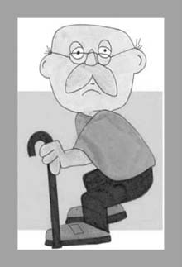
This generation likes to see the paperwork. My Uncle George Renard was a World War II veteran who told the greatest war stories I ever heard—and had the paperwork to back them up. He actually could back the stories up with documents and facts. "You can't tell the story unless you have the paperwork to support it," explained my uncle.
So ask Albert's advice; get his opinion; and respect his views. This generation has become increasingly "wary" due to reversals in their investments over the years and children becoming ever more dependent upon them. Give them the respect they have earned with their time invested on this planet. They will appreciate your courtesy toward them.
The Dean of Mean is usually a large, forceful client who really gets a kick out of throwing their weight around. Since they are large and direct people, they are accustomed to getting their way.
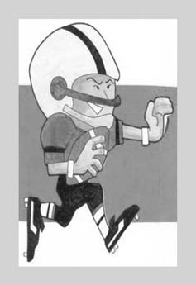
The forceful buyer is not too deep of a thinker. You will be tempted to fight back. Don't do it. That's exactly what they are seeking—because they're looking forward to beating you up.
Instead, let them win on inconsequential points that do not matter. Use the "take away close." The reason this closing technique works so well is simple: "They want what they cannot have."
Practice this on your fellow salespeople or on your kids. Give them three options, two of which you know they want and one that is only so/so—then take that one away. Guess which one they will cry over? Taking it away will cause them to be even more interested in that which they cannot have.
Finally and most important, do not back down from the forceful buyer. The moment you do, you have lost any credibility and any respect they may have had for you.
Perhaps the most frustrating clients we deal with are those who simply won't shut up: the talkative customers. Not that you have much choice, but try to develop good listening habits with these clients. You can't out-talk them so don't try. Appeal to this characteristic that they have in their personality. Give them feedback. "If I understand you correctly, Mr. Client, you're saying. . . ." Then paraphrase their comments and write them down to make sure you have quoted them accurately.

Play to their strengths. Use open-ended questions that are designed to elicit a rhetorical, open-ended response. Let them talk, but find a place to cap and channel the conversation. Otherwise, they'll simply talk you out of the proposal before you've had a chance to conclude it.
When they take that big breath to gain new strength to continue their verbal barrage, hop in and say something creative like, "You said something just then . . ." They'll freeze in their tracks. They can't wait to hear what you think they said that is so important—mostly because they know they haven't said anything of significance in years. They'll pause to hear what you have to say.
Dobie the Doubters are skeptical people who don't trust you. By nature, they are rational folks who are generally nonbelievers. Perhaps they have been burned before and they want to avoid a replay.

Help comfort them by isolating their objections. Try to zero in on the real issues and avoid emotion. Do not let them introduce evidence of another occasion that has nothing to do with the issues at hand.
Try using the Ben Franklin close. It's a simple process that has been around for hundreds of years. Draw a line down the middle of a piece of paper. Write the word good on one side and bad on the other.
GOOD | BAD |
Volunteer the negatives; narrow the objections; and isolate the issues. By now, the client has already expressed their thoughts, so put them on the table first. "If I understood you correctly, Mr. and Ms. Client, you said, . . . ." Write them down on the negative side.
On the positive side, make a list of all the attributes your proposal espouses. If the Doubters are as rational as you perceive, they will see your longer list as ample reason to accept your proposal. Logic and rationality should win out.
Finally, be aware of the authority that exists in silence. Know when to shut up. There is power in what Paul Harvey used to call the "pregnant pause." Stop talking and simply look them in the eye.
Flawless Francis is the precision buyer, the perfectionist, the client for whom everything must be perfect or they refuse to proceed. They are analytical in their approach to everything. "Flawless" likes details and will often make decisions based on those meticulous facts that have little to do with the overall decision. They are sticklers for particulars and they love "third-party proof" that verifies their position.
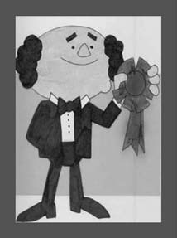
Letters of recommendation from similar prospects are particularly helpful with "Flawless Francis." Do not rush Francis; if this client feels pushed, she'll likely turn and run. Take the time to educate and motivate them with the facts.
Apathetic Alex is just plain bored. Their apathy speaks to their tremendous indifference toward everything you are proposing. At best, these clients are "lukewarm" about every suggestion you make. They will often yawn or look away as if you're killing them with boredom. It's as if they don't want to be there.
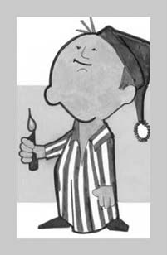
Though they tend to look permanently unconcerned, nonchalant, and even unbiased, don't buy it. It's part of their act. Instead, draw them out with open-ended questions that will encourage them to provide you with key information that can assist you in solving their problem.
Close them early and often. Don't be afraid to use visual aids and third-party testimonials to make key points—and be sure to cover those "hot button" questions.
Hanks are just plain stubborn! They are dogmatic, contentious, narrow-minded, and unshakable in their beliefs. Compliment them with firm resolve. Be careful not to confuse them with the facts. These folks buy based on emotion, not logic.

The business goes on the books on the shoulders of an emotional decision. However, make no mistake; it stays on the books with logic. Don't get into a verbal volleyball game with Henry. He's headstrong and proud of it.
Be careful with Henry. Don't start believing your own press releases about how great you and your company are. He's not buying it, and frankly, neither should you. It's okay to be confident in what you offer, but don't make the mistake of believing your own marketing propaganda. Keep it real with Harry—he just wants the facts.
Oscar the Orator has an opinion about everything. This prospect wants to be heard on any and all issues. They ramble a lot and rarely have a point to their conversation—so you must learn to guide their discourse and bring them back to the subject at hand. Ask lots of questions, but always direct the conversation.

Oscar is going to need to have the last word. Let it go. Close hard and often on minor points. Keep Oscar on track. Understand that, like most people, Oscar does and says things for his reasons, not for yours. Find out what motivates Oscar and appeal to that.
Stanley knows it all and he enjoys being sassy about it all. As the old saying goes, any defendant who represents himself has a fool for a client. Still, you must appeal to Stanley's ego—so flatter his toughness. Use the power of silence. Speak in quiet, restrained tones. Escort them delicately through the entire process by educating them and quietly nudging them into the right decision.
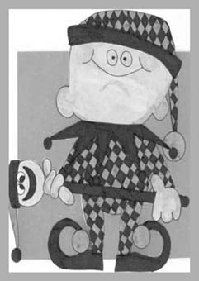
Louie can be a particularly vicious prospect. His dishonesty, conniving, corruptness, and shifty approach to everything makes this client particularly deceitful and deceptive. You run the risk of investing a lot of time in Pinocchio and having literally nothing to show for it. Discount Louie's statements. Review the facts and constantly reiterate them to Pinocchio. "You said, did you not . . ." or "I understood you to say. . . ." Put them on the spot—or be prepared to burn a lot of time with little return on your investment.
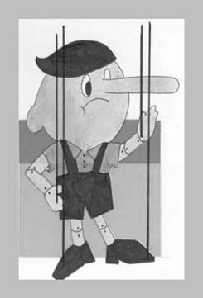
They use a lot of qualifying statements and modifiers like "You follow?" or "Are you with me?" to justify their positions.
They make comments like "To be 100 percent honest with you, as far as I know," which suggests that they haven't been totally honest up until this point.
They make Freudian slips in speech patterns.
They change thoughts in the middle of a statement.
They tend to use speech patterns laced with ahh's and uhm's and you-knows. This is not simply a crying need for a Toastmasters Club; it's also an identifier of deceit.
They tend to stammer and stutter often.
Gabby loves to yak on the phone. This client has great verbal skills and is very articulate. They enjoy creating enthusiasm but can waste an inordinate amount of your time. Restrict and steer Gabby's conversation, or plan to spend a lot of time with her. Stick with closed-end questions. Paraphrasing might encourage Gabby to take off into different directions, so be careful to stay focused. Try to summarize and don't be afraid to use reflective silence.

Painless Peter is the easy buyer; in fact, he just may be the easiest buyer you'll ever deal with. Peter makes quick decisions, quite often without all the facts. While he is open-minded, his decisions are largely based on emotion instead of logic. These purchasers are risk-takers to some degree, which suggests that they are bored with things and don't mind making quick, miscalculated decisions based on impulsive characteristics. They often throw caution to the wind.
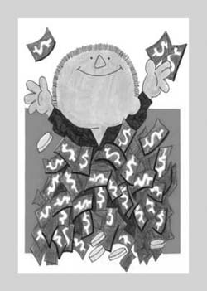
Peter's greatest attribute is his trusting personality, so make sure you don't abuse your relationship Painless Peter. Be totally honest and aboveboard on all issues. Treat Peter like your own parents.
Ralph is a little to the right of Genghis Khan. He's a classic conservative, so do not try to change him. After all, conservatives believe they have something to conserve. Use third-party proof stories with Ralph to gain his respect of the conservative. Prove your worth to the conservative client by being true to your values and your word.
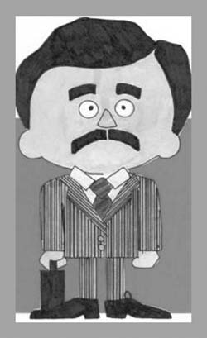
Analytical Andy is a classic logical prospect who wants all the T's crossed and the I's dotted—so make sure you do it for him. Andy never buys based on emotion—only on logic. He is nearly completely concerned with profit, terms, conditions.
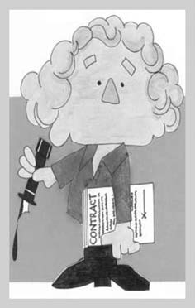
Avoid confusing, illogical behavior. Andy is looking for answers based on "just the facts." Avoid surprises and establish everything on terms and conditions that you can prove. Unfortunately, Andy also suffers from paralysis by analysis.
Buford the Bewildered is, quite simply, confused. He doesn't know what he doesn't know and doesn't even know the right questions to ask to get the answers he needs. The best defense for this kind of perplexed prospect is his constant puzzlement; so help Buford sort things out. Ask lots of open-ended questions and let him provide the conversation's direction. Understand that Buford doesn't know his script, so lend a hand by asking the right questions and channeling his responses.
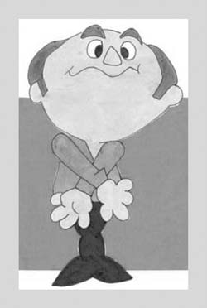
Toby is the passionate, emotional prospect. All of his decisions are based on emotion, and he is completely indifferent to logic. Toby responds best to greed, pride, fear, and ego. Emotional clients are often spur-of-the-moment purchasers who love deals. An important characteristic is that they enjoy doing business with people they like. Warm up to Toby, and build a deep relationship with him. Appeal to his emotional side by expressing exactly what it is about your product that will make him happier/more relaxed/more effective.
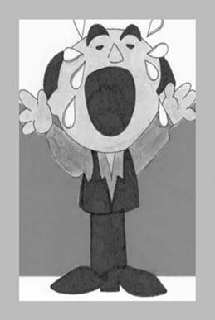
The bargain buyer is always looking for a deal and will generally walk if they don't get it. Lance wants the lowest price, the best terms, the most favorable conditions—and he wants it "yesterday."
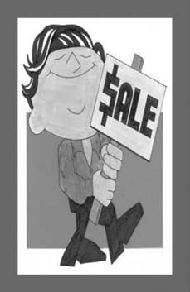
Since Lance cares only about getting the cheapest price, make room to give and take with him. Let the bargain buyer feel they are getting the best deal possible. Position yourself accordingly with Lance, and you'll save time and resources.
This may be the most rational person with whom you will ever come in contact. Paying meticulous attention to every detail, Melvin doesn't miss anything. These buyers gravitate to certain professions, such as accounting, planning, and engineering. The nature of their work suggests that they are drawn to analytical work. Save tons of time by providing Melvin with all the facts. The rational buyer will not proceed without them.
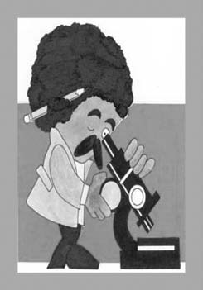
Woody will make you crazy if you let him, because this client is incredibly indecisive. They are often uninformed and will vacillate between decisions. When dealing with this type of customer, close on every key point and close often. Isolate his objections.
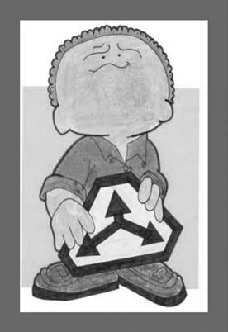
A very effective approach to working with the indecisive client is to use the "set aside" close. Identify the major problems, and set them aside. Once you've cleared up all the other issues, come back to what you've "set aside" and deal with it.
Ornery Olin is an obstinate client who has many of the same characteristics of several of the others on our list. He is indecisive and many times uninformed. It's completely fair to have an agreement with the Olin on the front end to set the terms and conditions of your relationship. Bring the agreement up as often as necessary.
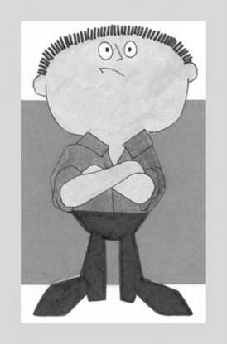
The Olins of the world fluctuate often; they simply will not make decisions. Close them on every key point and remind them of their agreement. Isolate the objections. Set them aside and come back and close on the isolated areas.
Takeaway Servicing and Selling Tactics
Listen
Keep an open mind.
Consider how all customer service tools may be used by you to improve your business.
Profile your customer to know their characteristics.
Learn
Increase your library of resources.
Plan your strategy.
Know the characteristics of your client.
Lead the Customer to Solutions
Create the environment.
Introduce the vision.
Communicate the expectations.
Help your client find answers to their questions.
